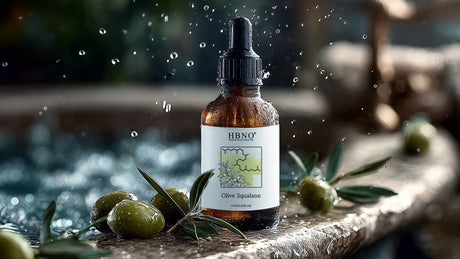In the world of essential oils, few scents are as instantly recognizable as mint. Among the most popular mint varieties are Peppermint Essential Oil and Spearmint Essential Oil, each offering a unique aromatic profile and set of benefits depending on your intended use.
When comparing Spearmint Oil vs. Peppermint Oil, it's essential to understand their differences in composition, aroma, and applications. This guide will help you navigate the choice between these two refreshing oils and explore how they might fit into your wellness routine, home care, or lifestyle products.
Aroma and Scent Profile
One of the first distinctions people notice when comparing Spearmint Oil vs. Peppermint Oil is their scent.
Peppermint Essential Oil is sharp, cool, and invigorating. The high menthol content gives it a powerful, fresh quality that tends to awaken the senses. It's the type of scent that clears the mind and revitalizes the atmosphere in a space.
Spearmint Essential Oil, meanwhile, offers a more delicate and subtle fragrance. It has sweet, minty notes with soft, fruity undertones. Because it's less intense, many people prefer it for relaxing environments or for products intended for children or those sensitive to stronger aromas.
Composition Differences
Understanding the chemical makeup of these oils helps explain their different effects.
Peppermint Essential Oil contains 30-40% menthol, along with menthone and 1,8-cineole. These compounds contribute to its cooling effect and crisp aroma.
Spearmint Essential Oil, however, contains only about 0.5% menthol. Instead, it's composed mainly of carvone (up to 60%), limonene, and small traces of other compounds that give it a sweet, less pungent profile.
This contrast makes spearmint more suitable for people looking for a gentler mint experience, especially in topical applications where sensitivity to menthol could be a concern.
Applications and Common Uses
While both peppermint and spearmint oils are used in similar ways, the choice between them often depends on your preferences and sensitivity.
Peppermint Essential Oil is commonly used for:
- Aromatherapy: Its energizing scent is frequently diffused in spaces where increased focus or alertness is desired.
- Personal Care Products: Peppermint is a go-to for shampoos, conditioners, and body scrubs for its fresh, tingly sensation and peppermint perfume.
- Cleaning Solutions: Due to its strong scent, peppermint is often added to natural household cleaners and air sprays.
- DIY Projects: Many people incorporate organic peppermint essential oil into homemade scented candles, bath salts, or roller blends.

Spearmint Essential Oil is popular for:
- Relaxing Aromatherapy: Its gentle scent makes it ideal for calming blends used in the evening or in meditation spaces.
- Children's Products: Because of its soft aroma and lower menthol content, spearmint is often preferred in products for kids.
- Skin Care: Spearmint's milder nature makes it more suitable for sensitive skin when diluted appropriately.
- Flavoring and Fragrance: Spearmint's sweet notes are perfect for breath fresheners, natural toothpaste, and lip balms.
Spearmint Oil vs. Peppermint Oil: How to Decide
The choice between Spearmint Oil vs. Peppermint Oil largely depends on your goals and sensitivities.
- If you enjoy bold, cooling aromas, peppermint may be your ideal pick.
- If you prefer gentle, sweet mints, spearmint is the way to go.
- For energizing environments, peppermint's crisp scent is uplifting and clarifying.
- For peaceful, relaxing moments, spearmint's softer notes create a more comforting ambiance.
- If you're blending for skin or children, spearmint is generally the gentler and more versatile choice.
When in doubt, try both in small amounts in different settings to see which one best suits your preferences and needs.
Tips for Safe Use
While essential oils are a wonderful way to add natural fragrance and function to your life, they should always be used responsibly.
- Always dilute before topical application using a carrier oil such as jojoba, coconut, or sweet almond oil.
- Perform a patch test to check for skin sensitivity.
- Avoid direct contact with eyes or mucous membranes.
- Store essential oils in a cool, dark place to maintain freshness and potency.
- Use extra caution with children, pets, and pregnant or breastfeeding individuals.
If you're unsure about how to incorporate peppermint or spearmint oil into your routine, starting with a small, diluted amount and observing your response is always a safe approach.
Final Thoughts
Peppermint Essential Oil and Spearmint Essential Oil are versatile additions to any collection, offering either an energizing kick or a soft, minty calm to suit your needs. When choosing between the two, consider aroma intensity, intended use, and personal preference.
Opting for high-quality oils like Organic Peppermint Essential Oil ensures maximum benefits and a refreshing scent experience. For bulk purchases, HBNO Bulk Organic Peppermint Essential Oil deliver premium quality ideal for personal use, product formulation, or resale. Choose a Top Private Label Manufacturers offering comprehensive private label and product support.




